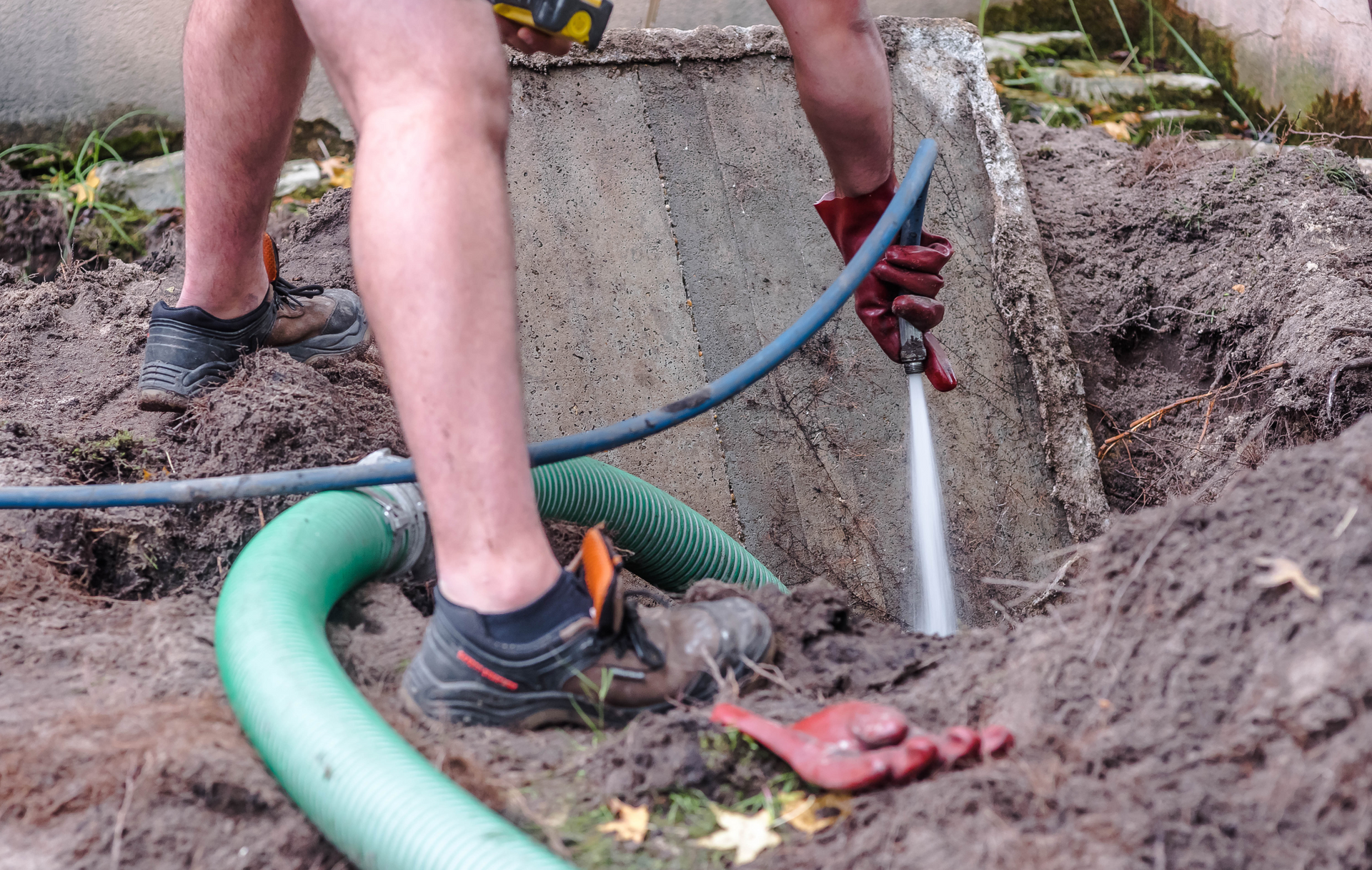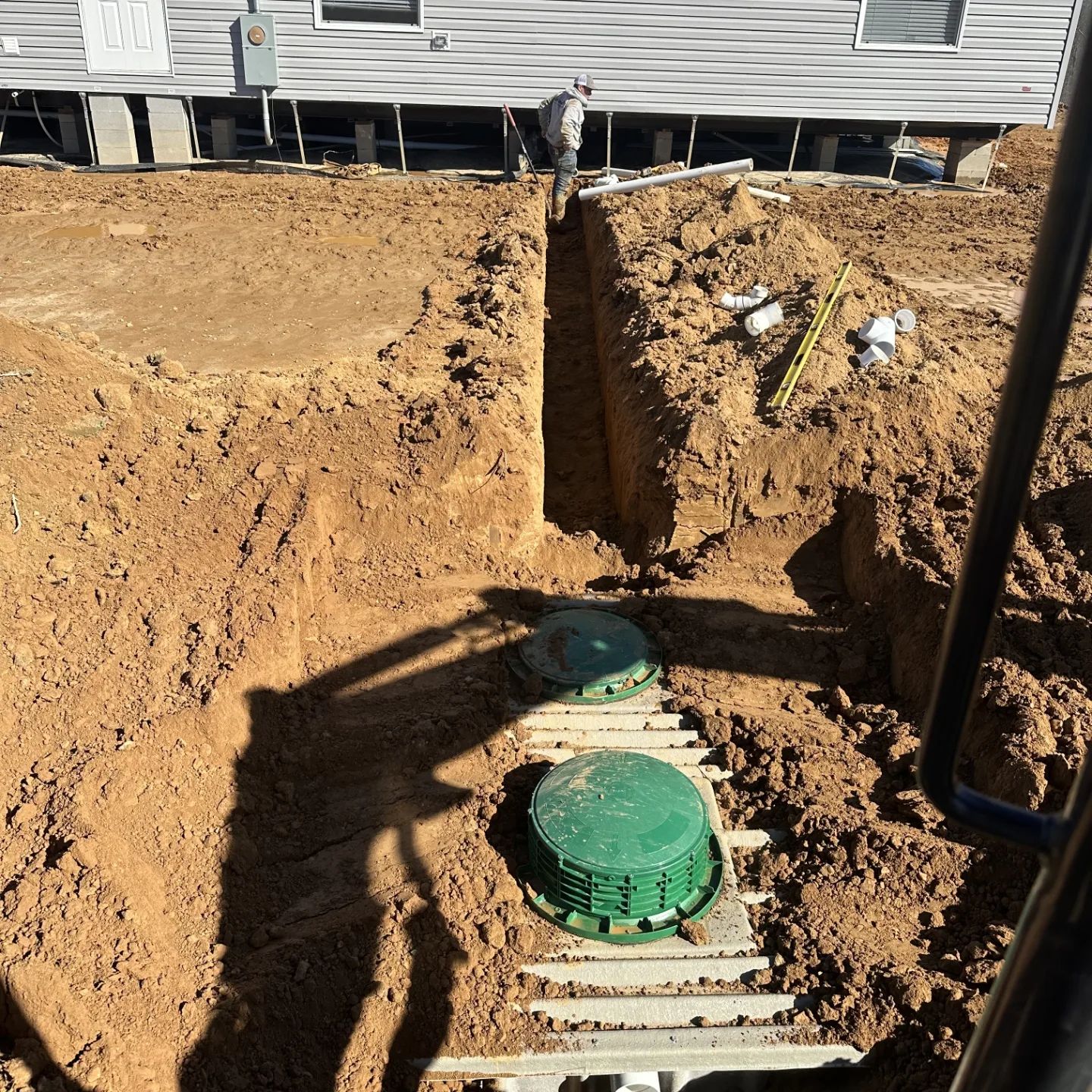FAQ: How Does a Septic Tank Work in Oxford, MS?
February 14, 2024
FAQ: How Does a Septic Tank Work in Oxford, MS?
Septic tanks, though often overlooked, play a vital role in wastewater management, especially in rural areas like Oxford, MS. If you're a homeowner with a septic system, understanding how it works is essential for its proper maintenance and longevity. In this comprehensive guide, we'll answer the frequently asked question, "How does a septic tank work?" We'll dive deep into the inner workings of septic systems, including their components and the crucial role they play in treating household wastewater.
1. The Basics of a Septic System
At its core, a septic system is designed to treat and dispose of household wastewater. It consists of three primary components:
1.1. Septic Tank: This is a buried, watertight container made of concrete, fiberglass, or plastic. It receives all the wastewater from your home, including toilets, sinks, showers, and laundry. The septic tank's job is to separate solids, liquids, and grease from the incoming wastewater.
1.2. Drain or Leach Field: After wastewater undergoes initial treatment in the septic tank, the liquid effluent flows into a drain or leach field. This is a network of perforated pipes buried in trenches filled with gravel or other media. The drain field allows the effluent to percolate into the soil, where further treatment occurs.
1.3. Soil: The soil beneath the drain field serves as a natural filter and additional treatment zone. It further purifies the effluent by removing harmful bacteria and impurities before they reach groundwater.
2. The Treatment Process
Now that we've introduced the key components let's delve into how they work together to treat wastewater:
2.1. Wastewater Inflow: When you flush a toilet, run the dishwasher, or use any water-based appliance, wastewater exits your home's plumbing system and enters the septic tank.
2.2. Primary Treatment: In the septic tank, the heavier solids (referred to as sludge) settle to the bottom, while lighter solids and grease float to the top. Bacteria present in the tank begin breaking down the organic matter. This initial treatment stage helps separate solids from liquids.
2.3. Effluent Separation: The clarified liquid, known as effluent, is pushed out of the septic tank and into the drain field through a distribution box or pipe. At this point, the effluent contains fewer solids and bacteria compared to the original wastewater.
2.4. Secondary Treatment: As the effluent disperses into the drain field, it undergoes further treatment. Beneficial soil bacteria continue breaking down any remaining organic matter and pathogens, making the effluent safer for the environment.
2.5. Final Disposal: The treated effluent gradually percolates through the soil in the drain field. The soil acts as a natural filter, removing contaminants and bacteria. Ultimately, the clean water enters the groundwater system or nearby water bodies, completing the wastewater treatment cycle.
3. Maintenance and Jetting Services
To ensure your septic system operates efficiently and lasts for years, regular maintenance is essential. Proper maintenance includes:
3.1. Pumping: Over time, solids continue to accumulate in the septic tank. Regular pumping by professionals like Oxford Septic Service is necessary to prevent solids from clogging the drain field or causing tank overflows.
3.2. Inspections: Annual inspections can identify potential issues early, allowing for timely repairs. Inspectors check for signs of wear, damage, and ensure the components function correctly.
3.3. Jetting Services: Jetting involves using high-pressure water to clean the pipes in the drain field. This service helps remove any clogs, sediment buildup, or roots that may obstruct the flow of effluent.
4. Oxford Septic Service: Your Partner in Septic System Care
Understanding how your septic system works is the first step in proper maintenance. At Oxford Septic Service, we're committed to assisting Oxford, MS, homeowners in caring for their septic systems. Whether you need routine pumping, inspections, jetting services, or have questions about septic system operation, our experienced professionals are here to help.
By comprehending the inner workings of your septic system, you're better equipped to make informed decisions regarding its care and maintenance. Contact Oxford Septic Service for all your septic system needs and ensure that your wastewater management remains efficient, environmentally friendly, and hassle-free.

Septic tank pumping is a crucial aspect of septic system maintenance that often goes overlooked by property owners. Regular pumping helps prevent costly repairs, prolongs the lifespan of the septic system, and protects the environment from contamination. In this guide, Oxford Septic Services shares valuable insights into the importance of routine septic tank pumping and its many benefits. Chapter 1: Understanding the Role of Septic Tank Pumping Overview of the septic tank pumping process and its significance in maintaining a healthy septic system Explanation of how septic tank pumping removes accumulated solids and sludge from the tank, preventing clogs and backups Chapter 2: Preventing Costly Repairs and System Failures Discussion of the potential consequences of neglecting septic tank pumping, including system backups, drain field damage, and groundwater contamination Exploration of the financial implications of septic system repairs and replacements compared to the relatively low cost of routine pumping Chapter 3: Extending the Lifespan of Your Septic System Explanation of how regular septic tank pumping helps prolong the lifespan of the septic system by reducing stress on system components and preventing premature failure Discussion of the correlation between routine pumping and the overall health and longevity of the septic system Chapter 4: Protecting the Environment and Public Health Examination of the environmental and public health risks associated with untreated wastewater discharge from poorly maintained septic systems Explanation of how routine septic tank pumping helps mitigate these risks by preventing groundwater contamination and protecting local water sources Chapter 5: Maintaining Property Value and Resale Potential Exploration of the impact of a well-maintained septic system on property value and resale potential Discussion of how routine septic tank pumping demonstrates responsible property ownership and can increase buyer confidence during real estate transactions Chapter 6: Ensuring Regulatory Compliance Overview of local regulations and requirements regarding septic system maintenance and pumping frequency Explanation of how routine septic tank pumping helps property owners remain in compliance with regulatory standards and avoid potential fines or penalties Chapter 7: Best Practices for Scheduling Septic Tank Pumping Recommendations for establishing a regular pumping schedule based on factors such as household size, water usage, and septic system capacity Tips for working with professional septic service providers like Oxford Septic Services to schedule timely and efficient pumping services Conclusion: Routine septic tank pumping is an essential aspect of responsible septic system ownership, offering numerous benefits for property owners, the environment, and public health. By understanding the importance of routine pumping and working with trusted professionals like Oxford Septic Services, property owners can ensure the long-term performance and reliability of their septic systems.

Installing a septic system is a critical step in ensuring proper wastewater management for residential and commercial properties. However, the installation process can be complex and requires careful planning and execution. In this comprehensive guide, Oxford Septic Services provides essential information and expert tips for homeowners and property owners considering septic system installation. Chapter 1: Understanding the Basics of Septic Systems Overview of septic systems and their components, including the septic tank, drain field, and distribution box Explanation of how septic systems function to treat and dispose of wastewater on-site, without access to a municipal sewer system Chapter 2: Assessing Site Conditions and Permitting Requirements Guidance on assessing soil conditions, topography, and site suitability for septic system installation Explanation of the permitting process and regulatory requirements for septic system installation, including obtaining necessary permits and approvals from local authorities Chapter 3: Designing the Septic System Overview of the steps involved in designing a septic system, including determining system size, layout, and location Discussion of factors to consider when designing a septic system, such as property size, soil type, and groundwater levels Chapter 4: Selecting and Installing Septic System Components Explanation of the different types of septic tanks, drain fields, distribution boxes, and other system components available for installation Step-by-step instructions for properly installing septic system components, including excavation, tank placement, piping installation, and backfilling Chapter 5: Ensuring Proper System Ventilation and Plumbing Connections Importance of providing adequate ventilation for the septic system to prevent the buildup of harmful gases, such as methane and hydrogen sulfide Guidelines for properly connecting plumbing fixtures, such as toilets, sinks, and showers, to the septic system to ensure efficient wastewater flow Chapter 6: Conducting Final Inspections and Testing Overview of the final inspection and testing process to ensure that the septic system meets all regulatory requirements and functions properly Explanation of common tests conducted during the final inspection, such as hydraulic load testing, dye testing, and soil percolation testing Chapter 7: Maintaining and Caring for Your New Septic System Recommendations for ongoing maintenance and care of the newly installed septic system, including routine pumping, inspection, and monitoring Tips for avoiding common pitfalls and ensuring the long-term reliability and performance of the septic system Conclusion: By following the guidelines and expert tips provided in this guide, property owners can navigate the septic system installation process with confidence. With careful planning, proper design, and professional installation by Oxford Septic Services, property owners can ensure the reliable operation and longevity of their septic systems for years to come.
